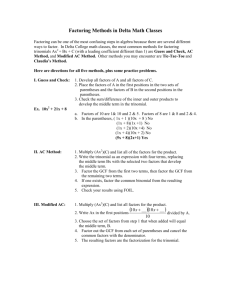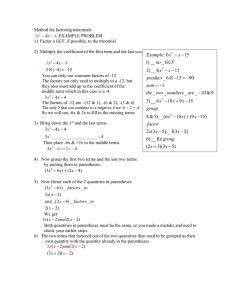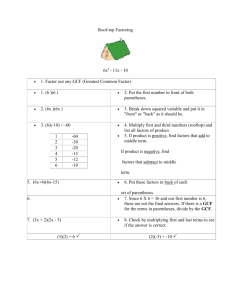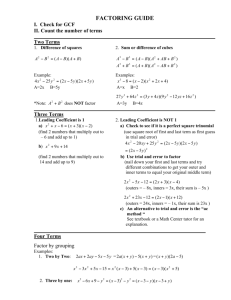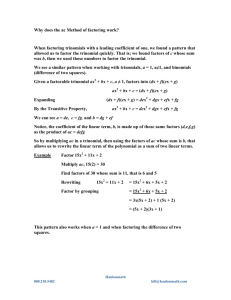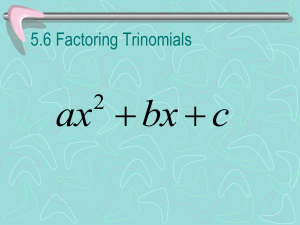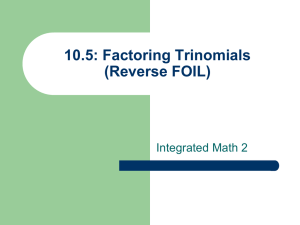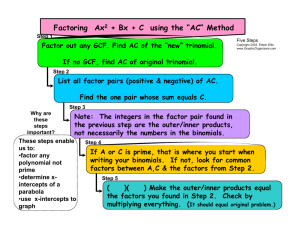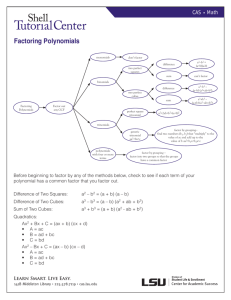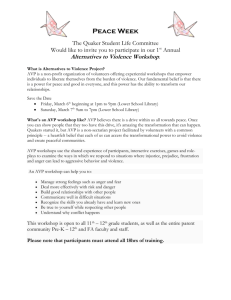Factoring Methods for Trinomials 09
advertisement
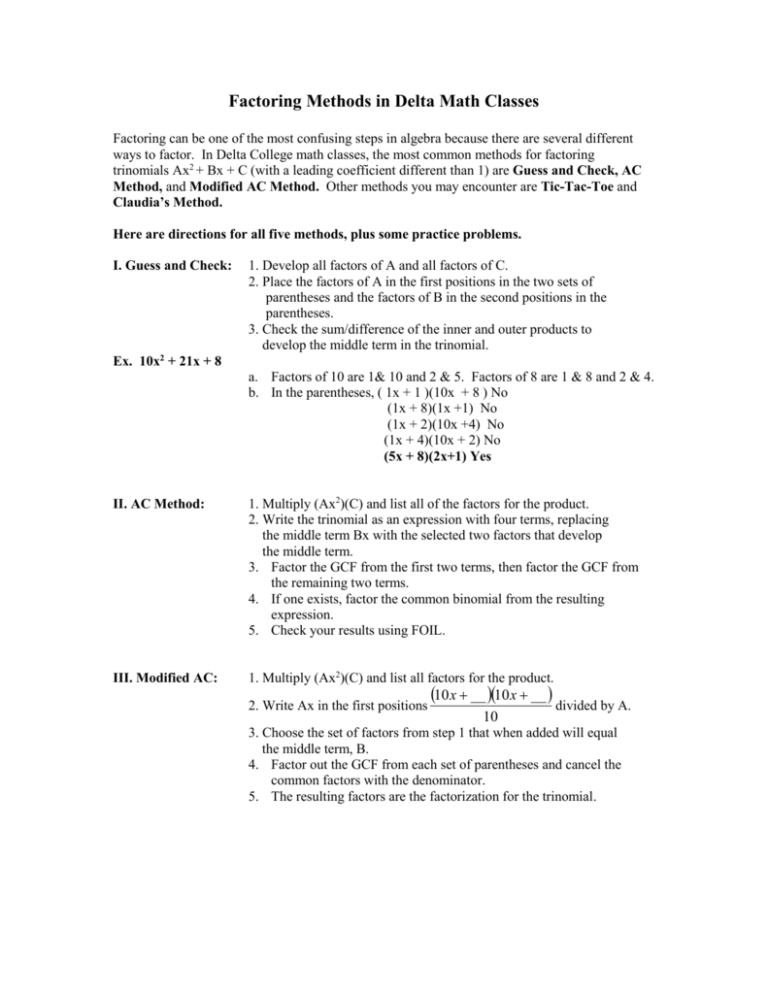
Factoring Methods in Delta Math Classes Factoring can be one of the most confusing steps in algebra because there are several different ways to factor. In Delta College math classes, the most common methods for factoring trinomials Ax2 + Bx + C (with a leading coefficient different than 1) are Guess and Check, AC Method, and Modified AC Method. Other methods you may encounter are Tic-Tac-Toe and Claudia’s Method. Here are directions for all five methods, plus some practice problems. I. Guess and Check: 1. Develop all factors of A and all factors of C. 2. Place the factors of A in the first positions in the two sets of parentheses and the factors of B in the second positions in the parentheses. 3. Check the sum/difference of the inner and outer products to develop the middle term in the trinomial. Ex. 10x2 + 21x + 8 a. Factors of 10 are 1& 10 and 2 & 5. Factors of 8 are 1 & 8 and 2 & 4. b. In the parentheses, ( 1x + 1 )(10x + 8 ) No (1x + 8)(1x +1) No (1x + 2)(10x +4) No (1x + 4)(10x + 2) No (5x + 8)(2x+1) Yes II. AC Method: 1. Multiply (Ax2)(C) and list all of the factors for the product. 2. Write the trinomial as an expression with four terms, replacing the middle term Bx with the selected two factors that develop the middle term. 3. Factor the GCF from the first two terms, then factor the GCF from the remaining two terms. 4. If one exists, factor the common binomial from the resulting expression. 5. Check your results using FOIL. III. Modified AC: 1. Multiply (Ax2)(C) and list all factors for the product. 2. Write Ax in the first positions 10 x __ 10 x __ 10 divided by A. 3. Choose the set of factors from step 1 that when added will equal the middle term, B. 4. Factor out the GCF from each set of parentheses and cancel the common factors with the denominator. 5. The resulting factors are the factorization for the trinomial. IV. Tic-Tac-Toe: 1. Draw a tic-tac-toe board. 2. Shade the free space, and put the Ax2 term in the center and the C term along the diagonal in the lower right corner. 3. Multiply (Ax2)(C) and list all of the factors for the product. 4. Find the set of factors that when added will equal the middle term, Bx. 5. Put one term to the right of Ax2 and put one term below Ax2. 6. Factor out the GCF from each row and column. If the terms from step 6 are negative then factor out a negative. 7. The factored form will be the top row times the left column. 8. Check your result using FOIL. V. Claudia’s Method 1. Always divide out the GCF first. 2. Next multiply AC and rewrite the trinomial with a leading coefficient of 1 and the third term with the product of AC. Ex. 10 x 2 21x 8 x 2 21x 80 3. Factor using the strategy for factoring a trinomial with a leading coefficient of 1. x 5x 16 4. Now divide each numerical term in the factors by the original leading coefficient and reduce the fractions to simplest form. 5 16 1 8 x x x x 10 10 2 5 5. Next, multiply the terms in each set of parentheses by the LCD for the two terms within that parenthesis and simplify. 1 8 2( x) 2( ) 5( x) 5( ) 2x 15x 8 2 5 6. Check your results using FOIL. VI. Practice these problems, using the method of choice. Completely Factor: a.) 12 x 2 x 20 b.) 30 x 2 23 x 14 c.) 10 x 2 23 x 6 d.) 10 y 2 32 y 6 © 2009 Katrina Nichols. Used by permission at Delta College Teaching/Learning Center.
